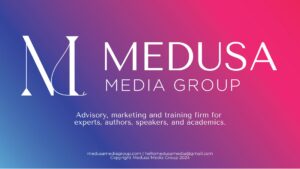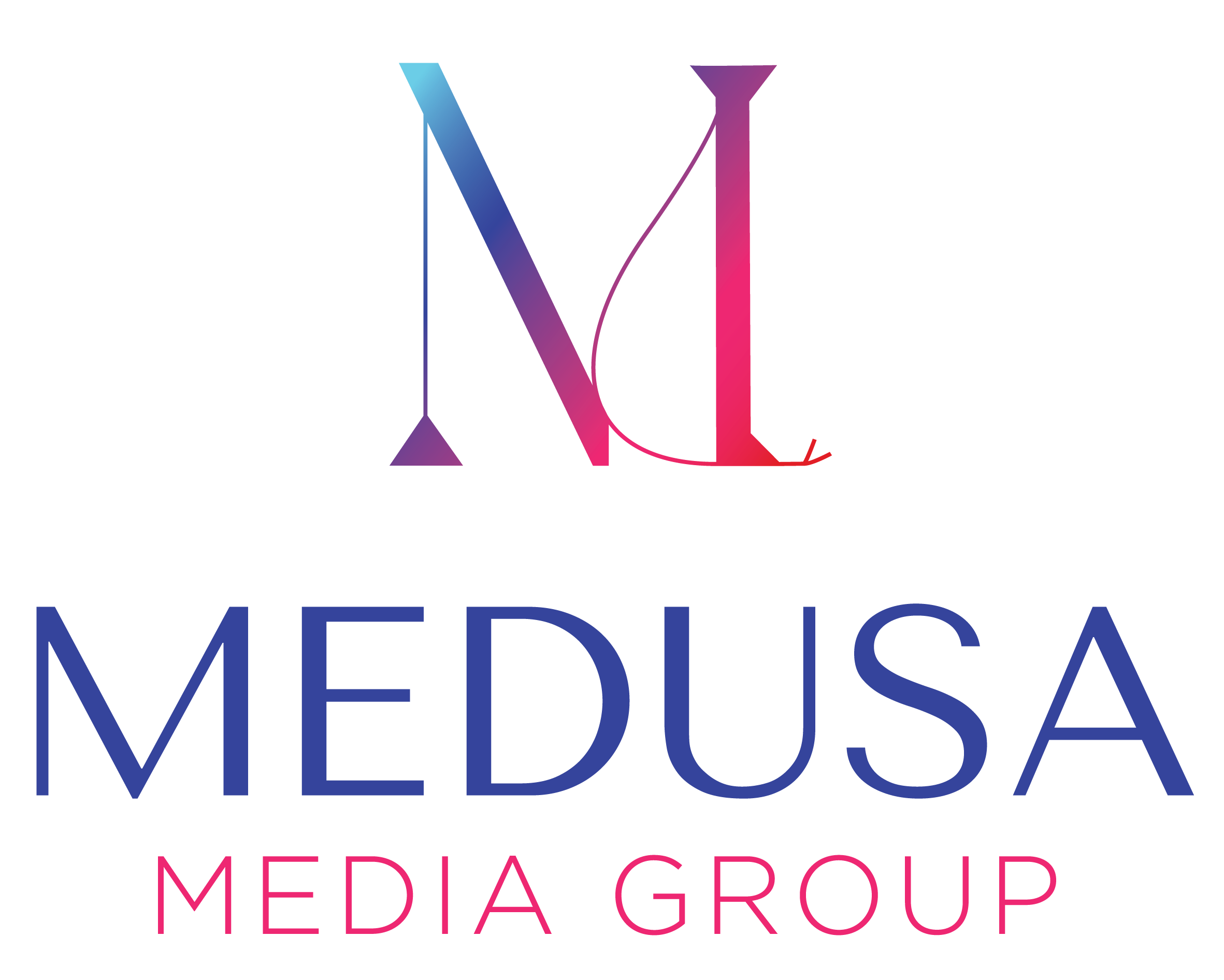
In early 2018, the Facebook algorithm “apocalypse” swept the online marketing world. For business pages, organic reach declined, news feed rankings changed, and content success metrics needed a complete overhaul. A lot of people were cranky.
But not Alaura Weaver. Because,
“[T]his has the potential to spark a long-awaited shift in the world of content marketing. Instead of focusing on what makes content popular and attention-grabbing, we need to focus on what makes content personal and conversation-worthy. When content impacts people on a personal level and gets them talking, well, that’s how change happens.” – The Facebook Feed-pocalypse is a HUGE opportunity for story-driven content marketing strategy— here’s why
Sounds like an improvement, doesn’t it?
I interviewed Alaura on #MarketingMinutes, a Facebook Live interview series featuring the best and worst experiences of women in marketing. She shares,
- Why “likes” and “clicks” are on social media are MEANINGLESS, and what matters instead,
- How the sales “funnel” is actually an hourglass, and
- Why she went political on social media (despite conventional wisdom against doing so)
Watch the interview with Alaura:
Sign up for the #MarketingMinutes email list to get short (I swear!) weekly updates about upcoming interviews:
Alaura Weaver: The best marketing tip that I can give, been echoed by billionaires like Jeff Bezos, is to actually just talk to your customers.
And don’t just give them surveys! Surveys are great, but they aren’t unique, qualitative data. As marketer we’re a cross between anthropologists and sociologists as well as business people. If we’re not having quality conversations with people when they’re expressing themselves as individuals, then it’s hard for us to bring empathy to our work.
From what I’ve seen, the companies that have the most genuine interactions with their customers are the ones that have the longest relationships. And because they’re listening to their customers, they’re able to innovate faster because they’re changing their focus from “we need to put out products” to “we need to serve our customers and create solutions that transform along with their lives.”
Eva Jannotta: That’s a reminder that the “old” way of doing marketing where you create a need or make people feel a lack in order to urge them to buy, is different than what you’re describing. What you’re talking about is empathy and compassion and deep listening and being a friend to your customer or your client.
Alaura Weaver: There are meaningful relationships and there are transactional relationships, right? The transactional relationships are the ones that were encouraged through Mad Men and direct response advertising. It’s high pressure sales. And you know what? There is a place for that. You say, okay I’ve laid out all of this information for you and now I’m going to trust you to make the best decision that you can, and then you put on the high pressure sales, right?
But you have to establish a trusting relationship with that person. And don’t make people feel bad about themselves for not using your product. It’s just because they are not the good fit for your product or your product isn’t a good fit for their lives.
It’s about creating these meaningful relationships where you are genuinely there to deliver value to the customer. And the transaction happens when they’re like, okay, great, this value that you’ve been delivering to me is fantastic. Where else can we go in this relationship?
Eva Jannotta: I can think of a lot of ways beyond surveys connect with your customer meaningfully and build a long term connection with them. Is there a tactic you’ve experienced that you find really effective for building that relationship?
Alaura Weaver: Do an email outreach and say, I value your time and I want to give you some kind of incentive for having a conversation with me about your experiences. We all get these receipts that say, “fill out a survey and get a coupon.” Well, maybe make it a more meaningful gift, and make it about having a conversation instead of checking off stuff.
The other thing is just go to the communities where people feel like they belong, and where they feel free to talk about what they care about. (Click to Tweet!)
For example, say I’m a business coach and I want to start teaching freelancers. I would go to a freelance copywriting group on Facebook and see, what are the questions that pop up over and over and over again? Say one of the questions that pops up is, how much should I charge for this? So you as a business coach know that this is something people care about and you can either provide a course or offer a webinar or part of your service will be getting them to a point where they are comfortable quoting their clients. That’s an amazing service that you can offer them and it’s inspired by listening to these people.
Eva Jannotta: That approach will inform all of your content writing and will give you all the fodder you need for inspiration and the detail you need to write your blog posts, emails and social media posts, right?
Alaura Weaver: You can also grab emotional language directly from these conversations! One of my colleagues was complaining about editing blogs posts from other people. She said, “I just don’t want to be stuck editing until the cows come home.” I was like, that’s copy gold right there! That’s a headline or a landing page!
It doesn’t mean that I’m not creative, but I’m able to spot stories and my motto is, your story is in your struggle. So go where the struggle is. Go where people are talking about their struggles and you will find that place of empathy. You will find that language that you’re seeking to phrase something without cliches. You’ll find ideas for topics, you’ll find ways of articulating benefits for your products. Where you go for the struggle is where you’re going to discover all of those things.
Eva Jannotta: In Finding Your Ideal Customer: A step-by-Step Guide To Building A Pre-Launch Startup Buyer Persona, you have a long list of specific places you can go to find this kind of language, to identify this struggle, to see the questions being asked. And at the end you offer a valuable content upgrade for a Buyer Persona worksheet.
Alaura Weaver: Yes, so that you know the questions are you should be asking when you’re creating this customer persona. Once you have your questions answered, I use Xtensio’s drag-and-drop User Persona Template to create a profile for your customer avatar.
Eva Jannotta: I’ve used the research-based approach we’re talking about and I’ve been intimidated by how time-intensive it is! When you do this work, do you have a way of keeping yourself from diving too deeply into a rabbit hole?
Alaura Weaver: There’s a canvas that I like to use called Jobs To Be Done. It helps you focus on the use-case scenarios that influence a buying decision. So you’re not figuring out your customer’s pet names, you’re looking at:
- What is happening in your life that leads you to purchasing or hiring?
- What leads you to that first interaction with a business?
- What leads you to the decision to have a transaction?
It’s an interview technique and it helps you center instead of going into analysis paralysis. But you have to realize that your customer persona is a living document. It’s going to change over time. So as you learn more and interact more with your customers, add to it and take away what you think it isn’t relevant anymore.
Eva Jannotta: What would you say to a business owner who is going through a pivot in her ideal customer, or maybe she feels torn between several different customer personas. How do you help your clients narrow their focus, put down boundaries, or work through a transition process when the world feels new and full of possible buyer personas?
Alaura Weaver: This is probably the biggest struggle my clients deal with because they want everybody to buy from them. I’m trying to get them to focus on getting your to your first 10, 20, 50 customers. Where are they going to come from? Are they going to come from everywhere? Probably not, right?
You want to focus on the group that will benefit the most from your product or service and is willing to pay for it. It’s about testing and treating your business like an experiment and not treating failure as a, Oh, I have a failed business. You don’t have a failed business just because you go in the wrong direction. That just means that you have an opportunity to learn and to change, to iterate and to optimize.
That’s a fundamental belief that I have. When I’m talking to my kids, I’m like, that’s a mistake. It’s there for you to learn from. It’s not for you to beat yourself up over. It’s not for you to stop doing everything just because you failed at this one thing.
With that said, if you’re getting to a point in your business where you have reached critical mass with those 10, 20, 50 customers and you realize, oh, there’s more opportunity over there… do the same thing you did before! Learn as much as you can about the customers that you’re going after. You can either adopt them into your personas and you have multiple personas now or you can pivot off altogether.
I had one client that was shooting for the stars. They hadn’t even launched their product yet! I’m said, I’m telling you this group over here that you haven’t even thought about yet will take you to the next level because they will not stop talking about your product. But my client didn’t see the value in pursuing that group because they were thinking enterprise-level clients.
But it’s about competition too, right? When your competitors are going over to enterprise level stuff and you’re just starting, why would you try to go after these big fish when you’ve got all of this little part of the pond to dominate? Figure out where the most opportunity people are that you can serve from where you are right now – not where the biggest accounts are.
Eva Jannotta: Earlier you spoke about failure and mistakes and how those aren’t the end of the world. However, there are some marketing strategies or tactics that fail multiple times or you hate them or something about them as not a good fit. It’s equally important to talk about those as it is to talk about the marketing that works well. Can you share a tactic or an experience that was terrible for marketing?
Alaura Weaver: I come from a business-to-business background as a sales rep and part of my job was to go out and sell advertising to small businesses. It was all about hitting the quota and not taking the person’s genuine needs and limitations into consideration. So I found myself trying to get this guy to buy a print ad in the phone book at the same time as smart phones were coming out, there was an economic crisis, and this was the Detroit area.
A phone book ad was not going to get this guy out of the mess that he was in. But the shareholders of the company that I worked for demanded that we grow and instead of adapting to the marketplace they just kept going in the same old direction. When you’re maintaining the status quo, I think that’s a terrible marketing tactic.
Eva Jannotta: It’s so comfortable to maintain the status quo and to do what you know, and it’s scary and risky to try something new and unproven. But you have to do that anyway if you want to move forward.
Alaura Weaver: I think that the marketing reaction to Facebook’s algorithm change was because digital marketers had settled into the status quo. Even though the algorithms change all the time, it was still the status quo of, “Reach, Likes and Shares are the key metrics that we’re seeking.”
But those aren’t true metrics! Those are not indicators of how powerful and how much value you’re delivering with your content. It’s not measuring how you are connecting with people because first of all, you’ve got the bots, you got to get the trolls and then you have the people who are just pre-scheduling their stuff, right? They’re just looking for branded tags and sending it out. If you’re automating your marketing within an already automated platform, you’re going to get automated responses, right? (Click to Tweet!)
Eva Jannotta: Folks have been seduced by the idea that social media marketing should be free (because it was for a time) and it should be able to run itself and we shouldn’t have to try all that hard at it. We got used to the way it worked in the early days of Facebook. But of course everything is changing and they’re going to continue changing. That’s the only thing we can rely on.
My impression is that we all need to market less and instead of rolling out articles or memes or whatever, to take the time to empathize and have conversations and be thoughtful and genuinely helpful and maybe do it less. It takes longer to produce quality content, but that’s how you’re going to serve to people and be memorable.
Alaura Weaver: Look, the tendency is to mass produce things so you can reach the masses, right? But when you do that, you’re diluting your ability to serve the people who most need what you offer. Take a look at retail: the mass produced items tend to be the lowest quality items. Look at food: the mass produced food tends to be the least nutritional food, right? (Click to Tweet!)
So when you mass produce something, you’re removing the quality from it. And Lord knows I’m a big fan of tech. I’ve been a computer nerd forever, so I understand the power of automation. I think it’s fantastic that there’s artificial intelligence (although we have to be very careful about how we direct it and what kind of world we’re teaching them about). But when it comes to mass production, if you’re treating your job as just output and not doing any input and not considering who you’re impacting and how you’re impacting the world, then when you’re probably doing a disservice.
Eva Jannotta: The online marketing world is saturated, but it makes me really happy when I see a good ad: a thoughtful, clever, humorous piece of marketing material or campaign. In that vein, what is a great advertisement you’ve been on the receiving end of as a consumer? Some companies are getting this right!
Alaura Weaver: It’s hard for companies to win me over since I’m wise to their ways! But I’ve been really impressed on the tech side with Drift, which is a conversational platform people use for chats on their website, because man, they ooze transparency. They are letting everybody into their world.
As far as a consumer brand, I’ve been impressed with Blue Apron. They disrupted the whole shopping and cooking experience by making things very compact. They’re serving the needs of people who are aware of food waste and of where food is sourced. They knew that these people are probably going to be a little more educated and be an NPR-type of listener. So they went to the podcast world like crazy and became big sponsors of This American Life and Serial. They recognized the fact that people who love storytelling also find meaning in family meals. It’s a great example of positioning.
And you can tell they put thought into their packaging and they anticipated problems. Their app is easy to use and their customer experience is seamless. I got a subscription for blue apron for my 72 year-old mother. She tech savvy enough that she spends all her life on Facebook, but she’s not tech savvy enough to like use an app so she uses the customer service phone number. She tells me every time, “oh, they’re so nice. They take such good care of me.”
That’s what I’m thinking about with my own marketing: how do you create this entirely seamless customer experience where there’s no dropping the ball on customer service? On the other hand, I just got on the phone with my cable company. The guy puts me on hold for a half hour and it was like this game. It’s this horrible manipulative game and my blood pressure’s rising just talking about it!
The cable company has the opportunity to create a seamless customer experience like Blue Apron, but they don’t have a reason to because they’re monopolizing the industry. That’s what it comes down to with marketing is if you really do care about the impact you’re making on people, then
- Ask them questions,
- Find out what’s important to them,
- Create the experience that they need to feel like they can trust you and that you are doing what’s in their best interest.
Eva Jannotta: Customers service is a huge part of marketing. And it reminds me of something you’ve mentioned before: the sales funnel is actually an hourglass. You hold the prospect’s hand through this experience of going further and further into your funnel. But once they drop through the funnel they have this other half of the hourglass where you want to make working with you as pleasant and easy as possible. So they feel like they’re being cared for, that their needs are being met, that they’re valued.
Alaura Weaver: It’s a self perpetuating sales cycle that way. I just spoke on Facebook Live about Blue Apron. They’re not paying me for that! When you treat your customers like you care about them, they care enough about you to want to help your business grow. That’s part of that meaningful relationship that we’ve been talking about instead of a transactional relationship like with my cable company. I’m only as good as the dollars that I’m willing to spend with the cable company. It’s a terrible way to treat people.
Yet people out there shrug their shoulders and say, “what do you expect? It’s nothing personal. It’s just business.” No, it freaking is personal. This is my life! That was my money and you were trying to take it, and that money goes towards food and education for my kids, but they felt entitled to my money and I wasn’t allowed to say stop.
Eva Jannotta: Thank goodness there are companies disrupting that status quo. Can you share a time in your business where you did something disruptive? A time when you had to trust your instincts, go against the grain, or do business in an unconventional fashion? I like to hear examples of women in business having to trust ourselves and rely on our instincts rather than follow all the free advice that we’re bombarded with.
Alaura Weaver: I don’t know if you’ve noticed 😉but I have strong opinions and I’m not afraid to share them. But in the freelance and copywriting world, you’re encouraged to keep your politics to yourself because you never know who’s going to hire you.
But I want to know who’s going to hire me because what I’m doing for them is helping them make an impact in the world! And if that impact isn’t aligned with my values then I’m doing something that’s completely against my moral obligations to the world that I want to help shape.
So I will tweet out my political stances. I will retweet stuff that I believe in. I’m a strong intersectional feminist. I am also a story editor for a podcast called Inflection Point, which is all about achieving equality.
No judgment to people who aren’t comfortable taking a stand. But I do feel like that if you’re not taking a stand, you’re not being brave. You’re not being courageous. You’re settling into the status quo. And right now for so many people, the status quo is not acceptable. So when you are helping to reinforce the status quo, you’re actually harming people by doing that.
Eva Jannotta: Someone said to me recently that the political candidates who are embracing the margins and taking more radical and outspoken stances on issues are actually garnering more support than those who tend toward center. And the same is true with brands.
There are so many examples of brand activism right now. I heard of one started by a college student called Lip Slut, and their proceeds are donated to political nonprofits. That’s a very political angle and this company is going gangbusters. Taking a stance is drawing like-minded, values-driven clients and customers to your business, even if it feels a little risky. It’s curious that we’re seeing it pay off to take that brave stance and to draw a line in the sand and stand for what you value.
Alaura Weaver: But let me point out that if you’re going to take a stand, you better be willing to walk the walk, right? This isn’t a marketing ploy. Pepsi, cringe. Bad, bad Pepsi!
I heard somebody say, you have to pray with your feet. If you genuinely want to see change in this world, you have to walk the walk. If you don’t want to see change in this world and you’re just being a mouth piece for a marketing ploy, do us all and your company a favor and don’t bother because people who genuinely care will sniff it out and you will become a Pepsi.
Eva Jannotta: Years ago, Pop Chips had a commercial in which Ashton Kutcher was wearing brown face and pretending to be like a Bollywood director. Hasan Minhaj torn it shreds, and I’ve never touched a Pop Chip since. Yes, I’m only one person, but those missteps that are in such poor taste DO have an impact. They do. They do affect people for better or worse.
Alaura Weaver: These aren’t just individual moments, they’re a reflection of a pattern when it comes to larger companies, especially ones that are focusing on revenue or gross margin over the relationship they’re having with people.
I’m offering a mastermind course with Nichole DeMeré called Purpose Beyond Product, focusing on how you need to get customer service right from the beginning. When you create a model for customer success, that goes a long way with your marketing and customer outreach. That’s how relationships are built.
 Alaura Weaver is a story-based copywriter and content strategist who specializes in helping businesses speak “human.” As a contributor on Copy Hackers, Copyblogger, Foundr Magazine and Conscious Company, Alaura has written about the impact that storytelling can have on your business and how you can use your story to create meaningful relationships with your customers. You can learn more about working with her at wordweaverfreelance.com
Alaura Weaver is a story-based copywriter and content strategist who specializes in helping businesses speak “human.” As a contributor on Copy Hackers, Copyblogger, Foundr Magazine and Conscious Company, Alaura has written about the impact that storytelling can have on your business and how you can use your story to create meaningful relationships with your customers. You can learn more about working with her at wordweaverfreelance.com






